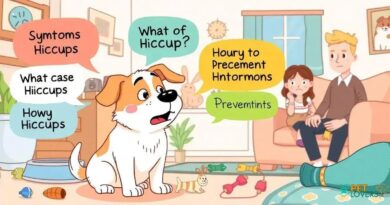What is Paw-tastic Myths
What is Paw-tastic Myths?
The term “Paw-tastic Myths” refers to the various misconceptions and myths surrounding dogs and their behavior, health, and care. These myths can often lead to misunderstandings among dog owners and potential adopters, affecting how they interact with their furry friends. Understanding these myths is crucial for providing the best care and ensuring a happy, healthy life for dogs.
Myth 1: Dogs Eat Grass When They Are Sick
One common belief is that dogs eat grass to induce vomiting when they feel unwell. While some dogs may vomit after eating grass, research indicates that this behavior is not necessarily linked to illness. Many dogs enjoy the taste of grass or may eat it out of boredom. It’s essential for dog owners to observe their pets and consult a veterinarian if they notice frequent vomiting or other concerning symptoms.
Myth 2: A Wagging Tail Means a Happy Dog
Many people assume that a wagging tail always signifies a happy dog. However, tail wagging can convey a range of emotions, including excitement, anxiety, or even aggression. The position of the tail, the speed of the wag, and the dog’s overall body language are crucial indicators of their emotional state. Understanding these signals can help owners respond appropriately to their dog’s needs.
Myth 3: Dogs Can See in Complete Darkness
Another popular myth is that dogs can see perfectly in the dark. While dogs have better night vision than humans due to a higher number of rod cells in their eyes, they cannot see in complete darkness. They rely on ambient light to navigate their surroundings. This myth can lead to dangerous situations if owners assume their dogs can see well in low-light conditions.
Myth 4: All Dogs Are Natural Swimmers
It is often believed that all dogs instinctively know how to swim. While many breeds are excellent swimmers, not all dogs possess this ability. Some breeds, particularly those with heavy bodies or short legs, may struggle in water. It’s essential for dog owners to introduce their pets to water gradually and ensure they are comfortable before allowing them to swim freely.
Myth 5: Dogs Age Seven Years for Every Human Year
The idea that one dog year equals seven human years is a simplification that doesn’t accurately reflect a dog’s aging process. Dogs age at different rates depending on their breed and size. Larger breeds tend to age faster than smaller breeds. Understanding the unique aging process of dogs can help owners provide appropriate care as their pets grow older.
Myth 6: Dogs Only Need to Be Bathed When They Smell
Many dog owners believe that bathing their pets is only necessary when they start to smell. However, regular grooming and bathing are essential for maintaining a dog’s skin and coat health. Depending on the breed, dogs may require baths every few weeks to months. Neglecting regular grooming can lead to skin issues, matting, and discomfort for the dog.
Myth 7: Dogs Eat Bones
While the image of a dog gnawing on a bone is iconic, it’s a myth that dogs should regularly eat bones. Cooked bones can splinter and pose serious health risks, including choking or internal injuries. Instead, dog owners should provide safe chew toys and treats specifically designed for canine dental health. Understanding the risks associated with bones can help prevent accidents and injuries.
Myth 8: Dogs Are Colorblind
It is a common misconception that dogs are completely colorblind. While dogs do not see the full spectrum of colors like humans, they can perceive some colors, particularly blue and yellow. Their vision is adapted for detecting motion and seeing well in low-light conditions. Recognizing the limitations of a dog’s color vision can help owners choose toys and training aids that are more engaging for their pets.
Myth 9: A Dog’s Mouth is Cleaner Than a Human’s
Many people believe that a dog’s mouth is cleaner than a human’s, but this is a myth. While dogs have different bacteria in their mouths than humans, they can carry harmful pathogens that may pose health risks to both themselves and their owners. Regular dental care and hygiene are essential for maintaining a dog’s oral health and preventing the spread of bacteria.



